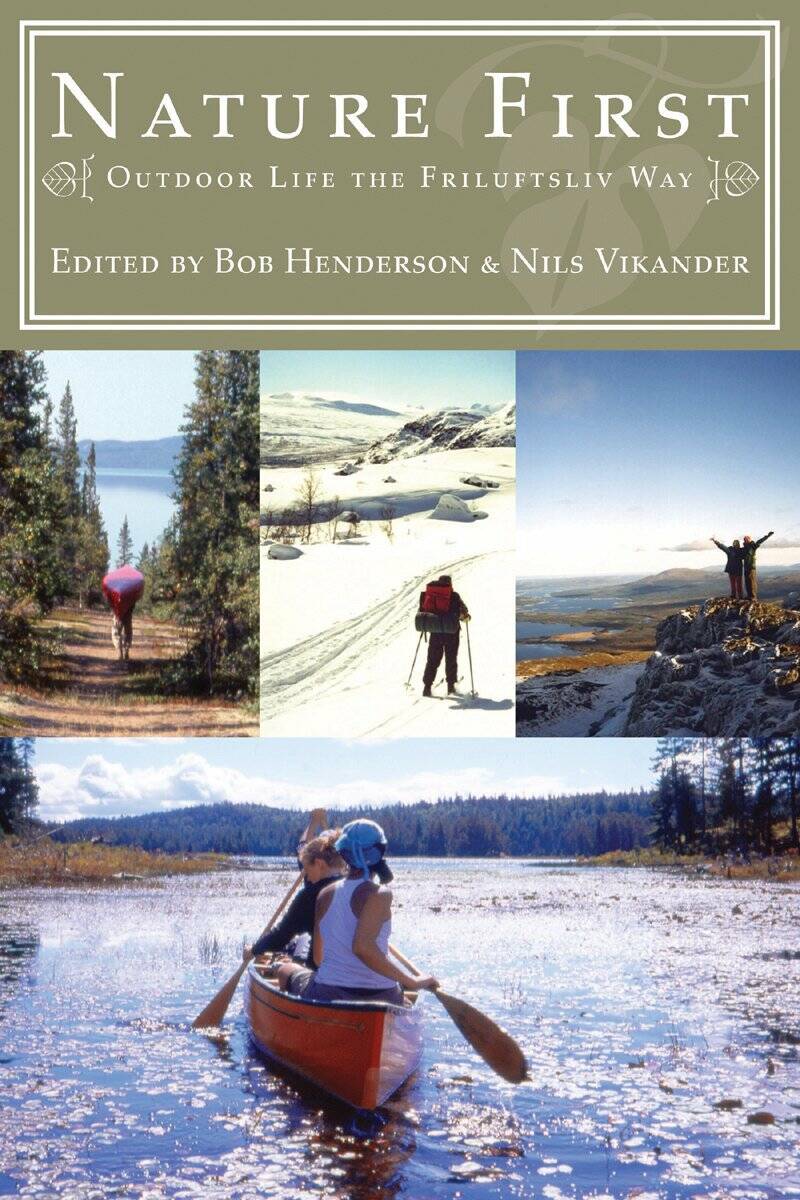I came to Alaska to live the simple life.
Reading books on dark winter nights. Skiing. Moving in beautiful scenery.
I found, as David Lee Roth once sang, the simple life ain’t so simple.
Thanks to “Nature First: Outdoor Life the Friluftsliv Way,” a book edited by Bob Henderson and Nils Vikander, I’m understanding more and more why.
I came across the book on fasterskier.com in the obituary of Vikander, who died Oct. 30 in Levanger, Norway.
The book is a collection of 25 essays about friluftsliv, 13 from Scandinavian authors, six from Canadian authors and six from international authors.
When there are 25 essays about a word, that word will be hard to define succinctly. Such is the case with friluftsliv.
I’ll let David S. Gilligan take a crack at it in his essay: “These central truths of nature as the home of culture, free citizenship and participation in nature, and the interconnectedness of all aspects of nature all comprise the philosophical foundation of Norwegian friluftsliv, literally translated into English as ‘free-air life,’ or ‘free-air living.’”
Several pages later, Gilligan allows the concept of “free-air living” is “notoriously indefinable” and also writes, “Everyone seems to load it up with what definition serves them best.”
After reading the 25 essays, I agree with Gilligan. Rather than masterfully whittling down friluftsliv into a clear concept, the essays combine to swirl the word in countless different directions.
Yet I found value in the book as a tool for reflection.
One big takeaway is the Kenai Peninsula is a great place for friluftsliv.
First of all, we have winter. I suppose, given the loose definition, that one could practice firluftsliv without winter, but Vikander makes his feelings clear with this gem of a line: “Especially intense is life in the northern winter; after all, everyone has summer, but winter is a privilege for the few.”
We also have access to free cross-country trails, which is something not to be taken for granted in America.
“Cross-country ski trails, maintained for free public use, are found in virtually all communities with modest population densities,” Vikander writes of Norway. “In North America such facilities are rarely without fees.”
We also have easy access to spectacular, jawdropping public lands and cabins. This checks a lot of the boxes Borge Dahle says are necessary for friluftsliv.
Those boxes are “experiencing nature is key; practising friluftsliv is not dependent on large costs for travelling and equipment; the nature and cultural landscape is easily accessible from permanent residences and holiday cabins; the passing of tradition is strongly anchored in natural social groups such as family and friends; friluftsliv is not dependant on organizations: it is possible for individuals to choose their own time and place for practising it.”
I saw a lot of myself and the Kenai Peninsula in these Norwegian authors, filling me with excitement. Then, I got to essays dealing specifically with America and friluftsliv, and remembered I am American, not Norwegian.
Some lines from Douglas Hulmes hit me hard.
He wrote how outdoor recreation “has for most Americans become a reward for our industrious, stress filled lives.”
Then this: “Despite the wisdom of some of America’s greatest philosophers, naturalists and scientists, America has remained focused on an anthropocentric view of nature that is a commodity for exploitation.”
And this: “American ideas of outdoor recreation have tended to reflect more of an imperialistic and capitalistic view of nature with a goal to overcome or conquer it.”
Finishing me off was this from Paul Hawken: “That an average adult can recognize one thousand brand names and logos but fewer than ten local plants is not a good sign.”
With some prodding, I’m pretty sure I could name 10 local plants. Still, how many times have I sat long hours at work just thinking about the rewarding ski I’ll have the next morning? How many mountains have I conquered?
Upon finishing the 25 essays, I felt pulled between two worlds. There have been many times I’ve been overcome by the sheer joy of outdoor activity here on the peninsula, which many authors mentioned as the essence of friluftsliv.
Yet there have been times I go to the outdoors not for joy, but with a specific goal of time or place that seals me off from that joy. I’ve actually walked on the Kenai beach at sunset, Redoubt and Iliamna floating across the inlet and the sound of waves majestically massaging my brain, and been frustrated by the slow pace of a friend because “I have things to do.”
This feeling of being pulled between two worlds was familiar.
In my 30s, my body was breaking down from too much time spent in front of a computer. I learned your brain and body adjust to the main task before it, so my brain and body adjusted to the computer, leaving myself more vulnerable to injury when skiing and hiking.
I now do 30 minutes to an hour of exercises each day to pull my brain and body back from adjusting solely to the computer. It’s a lot of work, but I’m happy that now I at least know what the game is.
“Nature First” taught me another game. Living on the peninsula, I’ve put plenty of time into savoring this place. But there is another culture pulling at me, a culture that will always be pulling at me.
Friluftsliv will never be automatic. At least I know the game now.
Nobody ever said it would be simple.

